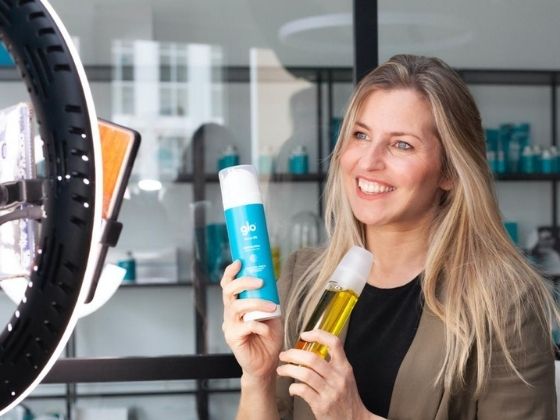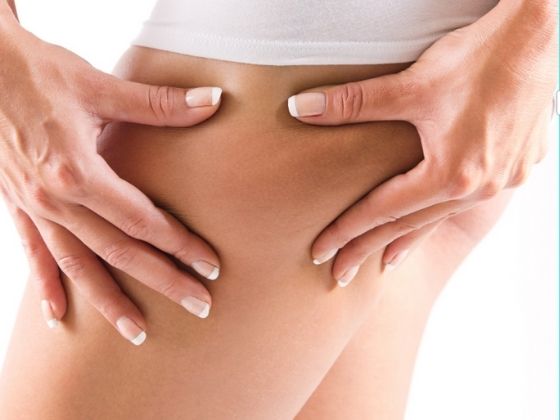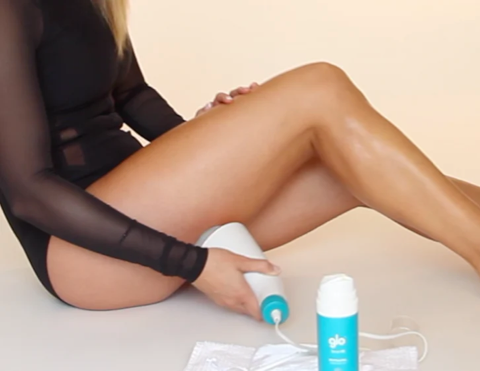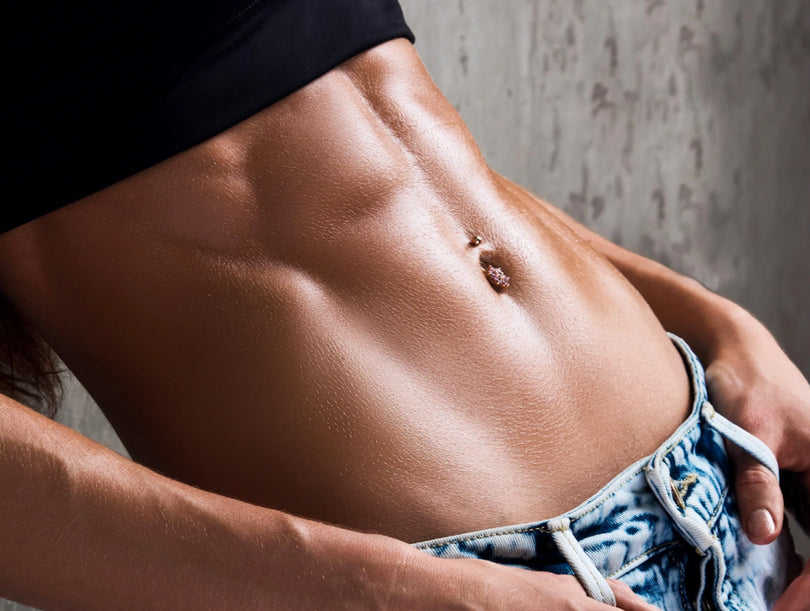Find out what type of cellulite you have. Not all are the same!
Cellulite tends to appear for various reasons at different times in our lives, from puberty to maturity. There are many causes that originate it: hormonal causes, sedentary life, diet... It is a progressive process, and once it appears, it inevitably evolves, unless we know how to treat it properly.
Therefore, it is very important to know what type and degree our case is, to know how we should treat it.
Types of cellulite
There are basically two types, hard and soft, although you can also have a combination of these two (mixed cellulite)
"Cellulite does not present itself in a unique way, in fact it is much more frequent to find associations of several types in the same woman"
Martin Bleker, dermo-aesthetic doctor at the Laser Institut
Although aesthetic cellulite is not a disease, and it does not pose any problem for our health. The most serious thing is that it can even affect self-esteem because it is considered unsightly and produces complexes that affect day-to-day activities, such as enjoying the beach or the pool.
It is a fact that cellulite affects 90% of women, and it is a process that is not associated with being overweight, in fact, you can still suffer from being thin and practicing sports.

The appearance of cellulite is linked, to a large extent, to the female constitution itself. On the other hand, in the case of men, they can very rarely suffer from it. This is mainly because the arrangement of the fibrous septa in men and women is different. As can be seen in this graph, in the case of men they form a mesh, and in the case of women with verticals.
We are going to remember in general terms, what cellulite consists of. It is an accumulation of adipose tissue in some certain areas of the body, especially in the thighs, stomach, hips and buttocks where nodules of fat are formed. These thickened nodules cause the skin's surface to bulge, appear irregular, with bumps and pits.
In this process, the following is affected:
- Fluid retention in the affected tissue
- The micro-circulation that irrigates that tissue
- Adipocyte hypertrophy (increase in size)
- Loss of elasticity of the fibrous septa

Hence, the complexity of achieving effective results in treatment, and that it must be treated from different aspects, such as food, micronutrients, massage...
Cellulite grades
4 degrees of cellulite are recognized, and we are going to help you identify them for yourself at home:
- Grade 1: it is practically not visible, you must press the area very hard so that the dimples are seen. In this phase, you have begun to retain fluid, the process is beginning and it is a perfect time to eliminate it and prevent it from going further.
Your allies: massage one day a week.

- Grade 2: Cellulite is visible to the naked eye if you squeeze the affected area or if you cross your legs, for example. In this phase, the dipocytes have begun to hypertrophy and increase in size. It is still a stage where it is easy to treat.

- Grade 3: It is not necessary to tighten the area, cellulite is perceived while standing in front of a mirror. However, if you are lying down loosely, it is not perceived, for example, when you are lying in the sun, it is quite concealed. The hypertrophy of the adipocytes has caused the loss of elasticity in the fibrous septa, which produces the depression of the skin (dimple), and the adipocytes bulge the skin. In the tissue there is retention and the micro-circulation is affected. Although you need a little more time and perseverance, in this phase, there are treatments that allow you to stop the cellulite process and improve.

Your allies: anti-cellulite massage applied constantly. This massage is hard and difficult, but you can help yourself with a good device to perform it properly and with a treatment cosmetic. Help your body from the inside with micro-nutrients that help you from the inside (micro-nutrients). You have to use all possible weapons to attack from all sides.

- Grade 4: It is the most serious, in some cases painful. It is always accompanied by excessive fluid retention and edema. Cellulite is perceived even when lying down without contracting the muscles or tightening the area. Many times in this phase, even with perseverance, it is possible to reduce, but the key is CONSISTENCE.

- Grade 5: grade 5 cellulite is a worsening of grade 4, until it becomes very hard, so much so that it is noticeable from the outside the lumps of fat (adipocytes) as if they were hard balls, which hurt, it is noticeable even with clothes on. In this case, already very serious, only surgery can help us. Once the surgery is done, we can help the body to drain and maintain the results with manual massage or with the Glo910 massage device, highly recommended by doctors for proper recovery, and to avoid suffering from cellulite again.
You can combine a professional treatment with a high-end home treatment, to achieve results sooner and maintain them, which is the key to not going back.
And include healthy habits such as: walk 30 minutes at a brisk pace every day, take the stairs instead of using the elevator, use the bike... eat healthy (NO SUGAR, LITTLE SALT, NO SATURATED FAT, FRIED FRIES, CARBONATED DRINKS, ALCOHOL...) Drink 2 L. of water a day...
According to the characteristics of cellulite
Soft cellulite
- It is the most frequent and the one that leads to greater psychological and aesthetic repercussions.
- It occurs mostly in people over 35 years of age and sedentary people.
- It is characterized by forming the typical “orange peel”.
- It is soft to the touch, exhibits extreme flaccidity and a gelatinous appearance.
- It is more noticeable during movement than hard cellulite. You notice it as you walk.
- The fabric sinks when touched due to lack of consistency.
- It is not usually painful, but it can produce a certain feeling of heaviness.
- Increases with age or weight gain.
- It may be accompanied by spider veins or varicose veins.
- It is often associated with atrophic muscles.
- Lack of exercise aggravates the condition.
- Affected areas: It occurs mainly on the front and back of the thighs and buttocks, although there are also cases in which it occurs on the abdomen, arms and back.
- Tips: exercise, consume proteins, avoid sudden changes in weight, apply anti-cellulite products through massages that activate circulation, drain and reaffirm.
- This type usually affects especially young women, athletes and dancers.
- The skin looks smooth, firm and without edema.
- The skin is hard to the touch, and is usually located mainly on the thighs and buttocks.
- It also manifests itself with the typical "orange peel" appearance, but unlike the soft type, the affected area is not flaccid.
- It is an easier type of cellulite to treat.
- This type of cellulite is not so visible to the naked eye. It is appreciated when we tighten the skin, appearing the typical irregularity of cellulite.
- In some cases it is painful to the touch.
- Affected areas: It frequently occurs on the outer face of the thighs, buttocks and on the inner face of the knees.
- Tips: improve nutrition, deep subcutaneous massage that mobilizes and drains fat and toxins, lymphatic drainage, mesotherapy...
Edematous cellulitis
- It is the least frequent type of cellulite, and is usually accompanied by excess weight, and fluid retention (lymphedema)
- It usually appears in women between the ages of 20 and 30.
- The legs are very swollen and can take on the appearance of a column.
- It is linked to a malfunction of the circulatory and lymphatic systems, although there are also other factors that increase the chances of it appearing, such as leading a sedentary life and eating a diet rich in carbohydrates and sodium, among others.
- It presents a significant fluid retention due to poor blood or lymphatic circulation.
- Characteristics of soft and hard cellulite can be observed at the same time.
- The consistency of the skin feels pasty, and even painful, both when touched or when sitting for a long time.
- It is usually accompanied by edema, cramps, heaviness and pain.
- Affected areas: It occurs mainly in the legs. In this article we tell you how to get rid of cellulite on the legs, especially on the thighs, knees and buttocks.
- Tips: improve circulation and venous return through lymphatic drainage massages, dry brushing, non-impact exercise, eating foods with diuretic properties, avoiding salt, prepared foods, etc. Perform lymphatic drainage massages and pressotherapy.
Depending on the extent of cellulite on the body
- It usually occurs in women who are overweight.
- Women who do not take much care of their diet. Because they eat a lot of calories during the day. Too much food rich in fat, such as junk food.
- It first appears when the girl develops.
- The cellulite process continues uninterruptedly throughout a woman's life.
Localized cellulite
- It occurs in certain areas of the body.
- In women it is frequently located on the thighs, inner knees, abdomen, buttocks, hips and arms.
- Although only 10% of men have cellulite, in their case, it is located in the highest parts of the body and in the abdomen.
Now you can know exactly what your case is and you know how you can treat it. We hope this post has been helpful to you.
If you feel a little desperate, you don't have much time, and you need an ally to erase it from your body and feel better, you can count on the help of the Glo910 anti-cellulite massager, which is revolutionizing the way women take care of themselves.
At Glo we try to help you by providing you with all the tools for a global treatment. You can consult with our experts by booking a free private consultation to see your particular case, without any commitment.
We invite you to visit our website www.glo910.com and we would love for you to follow us on Instagram, where we post videos and information that we believe will be very useful to you.













